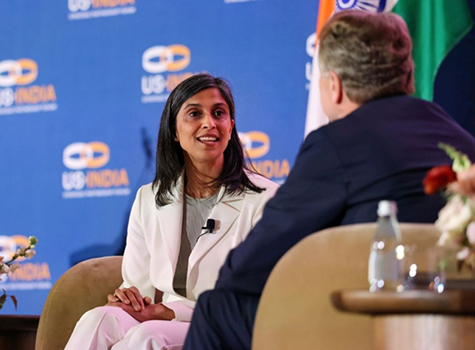
As I started to prepare for the annual Dances of India performance, as always I started connecting the rich Indian culture and its influence on other cultures including martial arts. If you want to see these martial arts in action, come to Dances of India on April 21, 2018 in Charlotte, NC.
I have to start this article with the dynamic Kalaripayattu from southern state of Kerala. One of the oldest fighting systems in existence, it is now practiced in Kerala and contiguous parts of Tamil Nadu and among the Malayali community of Malaysia. Originally, it was practiced in northern and central parts of Kerala and the Tulunadu region of Karnataka.
It is breathtaking to see these warriors/dancers move swiftly and gracefully while performing critical stunts. In several prosperous villages, display of traditional gymnastics, acrobatics and the dance by various village groups are arranged on competitive basis. Each group participates with great enthusiasm to win.
You can see the rhythmic movements of dance and discipline of Yoga clearly demonstrated by the performers.
This is how the martial arts and dances are connected. South Indian classical dances and their Karanas or poses inspired Yoga poses. All ancient practitioners of martial arts always practiced Yoga. Indian culture predates the Egyptian culture by 1700 years and Chinese culture by 1500 years. Yoga Sutras taught how to meditate on chakras or main points inside one’s body, which was later used in martial arts. Hasthas or finger movements and balancing of poses in dance and Yoga were later incorporated in various martial arts like Chinese Kung Fu, Japanese Karate, and Korean Tae Kwon Do. Yes! You read it right. Kung Fu, Karate and Tae Kwon Do were influenced by Indian martial arts and Yoga.
Like many other martial arts, historians theorize that Filipino Martial Arts Escrima (Spanish, Esgrima or fencing) also have roots in India! People who traveled brought this to the Philippines from Indonesia and Malaysia in the 12th and 13th centuries. One thing for sure: when the Spanish came to the Philippines in 1521, there was already developed weapon-based martial arts, with which the early Filipinos defended their land.
In Orissa, two kinds of martial dances are prevalent, Paika Nacha and Paikali. In the Khurdha region of Puri district, they perform Paika Nacha. My sister lived in Puri with her family and loved the location filled with beauty and many dance forms. In Oriya, Paika means soldier. Soldiers used this dance to warmup, as well as to entertain. Paika Nacha dance style is not very popular, because it has not been refined to fit into the modernization of current dance forms. However, these are very difficult dances to perform, requiring them to showcase various kinds of physical feats rhythmically to the beats of the drums. Some of the dance movements have acrobatic elements. This challenges the dancers with the ability to be flexible and strong at the same time.
This dance and martial art is very similar to a Brazilian martial art form. You just have to come to Dances of India to watch this!
On the other hand, the Paikali dance in northern Orissa, especially in the districts of Mayrubhanj and Keonjhar, is a stylized form of dance. It is marked for its leg extensions and stylized jumps very much similar to those of the widely known Chhau dances and Bhangra dances. Each of the Paikali dancers holds a sword in the right and a shield in the left hand, like a warrior. While dancing they also sing in recitative style. They smear their bodies with a whitish kind of powder called Kaimati.
A major segment of the dance is a mock attack-and-defense called Ruk-maar-nacha which is the foundation of the Chhau dances as well. The orchestral music that accompanies Paikali is as rich as appealing. The orchestra consists of three kinds of drum, such as Dhol, a barrel shaped drum that dominates the music, Dhumsa, a huge kettledrum made of wood and Chadchadi, somewhat like snare drum. The melodic music is provided by Mahuri, a wind instrument like Shehnai but with a sharper timber. The stamina to perform and sing at the same time is rare in today’s world of recorded music.
All these dances require great athletic ability and amazing flexibility along with the dedication to keep these dance styles alive in this age of Bollywood. Only men perform these Indian martial arts. I am so excited to see women now training for some of these art forms. It takes years of practice – not a weekend of learning. It also requires inner and outer balance of the performer. It is spiritual in nature while respecting the opponents and building one’s self esteem. You will learn life lessons through such traditional and intense dance styles.https://www.youtube.com/embed/hlymaHm14s4?rel=0?wmode=transparent——–
For questions or comments contact Maha via e-mail at: Gingrichmaha@gmail.com
Posted: Monday, April 9, 2018



